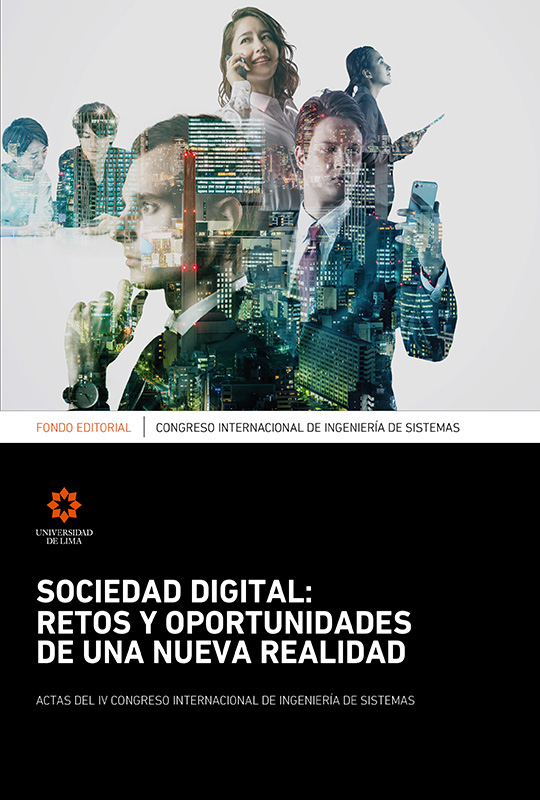Augmented reality educational applications: let’s find out what students and teachers need!
DOI:
https://doi.org/10.26439/ciis2021.5576Keywords:
augmented reality, education, teacher, survey, user experience, requirementAbstract
While the number of augmented reality educational applications (AREAs) has increased in the recent decade, the actual uptake of AREAs in real-life contexts has been low. Our systematic review showed that little attention was paid to the teacher’s perspective of AREAs. A handful of studies with teachers showed that the lack of equipment and inadequate support hindered the AREA uptake. However, these studies had a severe limitation: many of the participating teachers did not have any interaction experience with AR. Hence, we conducted a survey targeting teachers with actual experience of deploying AR in teaching. Results showed that teachers held positive views about the educational values of AR and wanted to use it more for teaching. To meet this goal, certain factors need to be improved: quality devices, teacher training, user experience of AREAs, and coverage of AR content. We derived teacher requirements to address the identified needs.
Downloads
References
Alakärppä, I., Jaakkola, E., Väyrynen, J., & Häkkilä, J. (2017, September). Using Nature Elements in Mobile AR for Education with Children. Proceedings of the 19th International Conference on Human-Computer Interaction with Mobile Devices and Services (MobileHCI ‘17), 1-13. https://doi.org/10.1145/3098279.3098547
Alalwan, N., Cheng, L., Al-Samarraie, H., Yousef, R., Alzahrani, A. I., & Sarsam, S. M. (2020). Challenges and Prospects of Virtual Reality and Augmented Reality Utilization Among Primary School Teachers: a Developing Country Perspective. Studies in Educational Evaluation, 66, 100876. https://doi.org/10.1016/j.stueduc.2020.100876
Alkhattabi, M. (2017). Augmented Reality as E-Learning Tool in Primary Schools’ Education: Barriers to Teachers’ Adoption. International Journal of Emerging Technologies in Learning (iJET), 12(02), 91-100. https://doi.org/10.3991/ijet.v12i02.6158
Azuma, R. T. (1997). A Survey of Augmented Reality. Presence: Teleoperators & Virtual Environments, 6(4), 355-385. https://doi.org/10.1162/pres.1997.6.4.355
Fujitsu & Intel. (2018). Research report: UK, The Road to Digital Learning. Fujitsu. https://www.birmingham.ac.uk/Documents/HEFI/FUJ-Education-Report-UK.pdf
Garzón, J., Kinshuk, Baldiris, S., Gutiérrez, J., & Pavón, J. (2020). How Do Pedagogical Approaches Affect the Impact of Augmented Reality on Education? A Meta-Analysis and Research Synthesis. Educational Research Review, 31. https://doi.org/10.1016/j.edurev.2020.100334
Ghavifekr, S., Kunjappan, T., Ramasamy, L., & Anthony, A. (2016). Teaching and Learning with ICT Tools: Issues and Challenges from Teachers’ Perceptions. Malaysian Online Journal of Educational Technology, 4(2), 38-57.
Heintz, M., Law, E. L. C., & Andrade, P. (2021). Augmented Reality as Educational Tool: Perceptions, Challenges, and Requirements from Teachers. In T. De Laet, R. Klemke, C. Alario-Hoyos, I. Hilliger & A. Ortega-Arranz (Eds.), Technology-Enhanced Learning for a Free, Safe, and Sustainable World (pp. 315-319). Springer, Cham. https://doi.org/10.1007/978-3-030-86436-1_27
Hsiao H.-S., Chang C.-S., Lin C.-Y., & Wang, Y.-Z. (2016). Weather Observers: a Manipulative Augmented Reality System for Weather Simulations at Home, in the Classroom, and at a Museum. Interactive Learning Environments, 24(1), 205-223. https://doi.org/10.1080/10494820.2013.834829
Hsu, T. C. (2019). Effects of Gender and Different Augmented Reality Learning Systems on English Vocabulary Learning of Elementary School Students. Universal Access in the Information Society, 18(2), 315-325. https://doi.org/10.1007/s10209-017-0593-1
Ibáñez, M. B., & Delgado-Kloos, C. (2018). Augmented Reality for STEM Learning: A Systematic Review. Computers & Education, 123, 109-123. https://doi.org/10.1016/j.compedu.2018.05.002
ISO. (2019). ISO 9241-210: 2019 Ergonomics of Human-System Interaction - Part 210: Human-Centred Design for Interactive Systems.
Joo-Nagata, J., Martinez Abad, F., García-Bermejo, J. G., & García-Peñalvo, F. J. (2017). Augmented Reality and Pedestrian Navigation Through its Implementation in M-lLarning and E-Learning: Evaluation of an Educational Program in Chile. Computers & Education, 111, 1-17. https://doi.org/10.1016/j.compedu.2017.04.003
Law, E. L. C., Roto, V., Hassenzahl, M., Vermeeren, A. P., & Kort, J. (2009, April). Understanding, Scoping and Defining User Experience: A Survey Approach. Proceedings of the ACM Conference on Human Factors in Computing Systems (CHI’09), 719-728. https://doi.org/10.1145/1518701.1518813
Law, E. L. C., & Heintz, M. (2021). Augmented Reality Applications for K-12 Education: A Systematic Review from the Usability and User Experience Perspective. International Journal of Child-Computer Interaction, 30. https://doi.org/10.1016/j.ijcci.2021.100321
Lu, S. J., & Liu, Y. C. (2015). Integrating Augmented Reality Ttechnology to Enhance Children’s Learning in Marine Education. Environmental Education Research, 21(4), 525-541. https://doi.org/10.1080/13504622.2014.911247
Moher, D., Liberati, A., Tetzlaff, J., Altman, D. G., & Prisma Group. (2009). Preferred Reporting Items for Systematic Reviews and Meta-Analyses: the PRISMA statement. PLoS Med, 6(7). https://doi.org/10.1371/journal.pmed.1000097
Pellas, N., Fotaris, P., Kazanidis, I., & Wells, D. (2019). Augmenting the Learning Experience in Primary and Secondary School Education: A Systematic Review of Recent Ttrends in Augmented Reality Game-Based Learning. Virtual Reality, 23(4), 329-346. https://doi.org/10.1007/s10055-018-0347-2
Putiorn, P., Nobnop, R., Buathong, P., & Soponronnarit, K. (2018). Understanding Teachers’ Perception toward the Use of an Augmented Reality-Based Application for Astronomy Learning in Secondary Schools in Northern Thailand. 2018 Global Wireless Summit (GWS), 77-81. https://doi.org/10.1109/GWS.2018.8686716
Sáez-López, J. M., Cózar-Gutiérrez, R., González-Calero, J. A., & Gómez Carrasco, C. J. (2020). Augmented Reality in Higher Education: An Evaluation Program in Initial Teacher Training. Education Sciences, 10(2), 26. https://doi.org/10.3390/educsci10020026
Squire, K. D., & Jan, M. (2007). Mad City Mystery: Developing Scientific Argumentation Skills with a Placebased Augmented Reality Game on Handheld Computers. Journal of Science Education and Technology, 16, 5-29. https://doi.org/10.1007/s10956-006-9037-z
Tzima, S., Styliaras, G., & Bassounas, A. (2019). Augmented Reality Applications in Education: Teachers’ Point of View. Education Sciences, 9(2), 99. https://doi.org/10.3390/educsci9020099
Wojciechowski, R., & Cellary, W. (2013). Evaluation of Learners’ Attitude Toward Learning in ARIES Augmented Reality Environments. Computers & Education, 68, 570-585. https://doi.org/10.1016/j.compedu.2013.02.014


